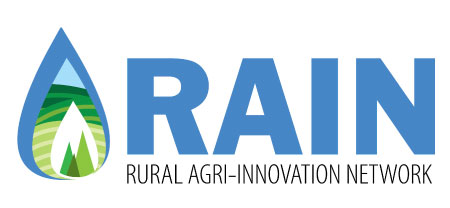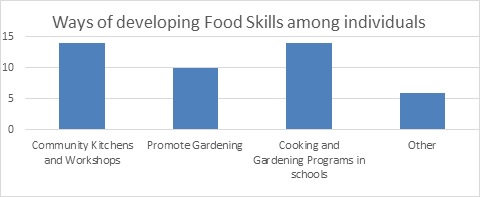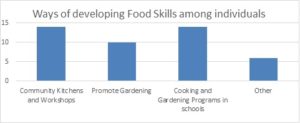Author: Latasha Isaacs
The purpose of this report was to gather information from various stakeholders on policies and initiatives that can be developed and implemented into the Algoma Food and Farming Strategy being led by the Algoma Food Network.
About the Strategy
The Algoma Food Strategy is being proposed as a community based approach to developing a healthy and sustainable food system in Sault Ste. Marie and the Algoma District, led by the Algoma Food Network. The Strategy aims to address the issue of food insecurity, increase local food production, and strengthen relationships with farming communities. This initiative focuses on seven areas: Food Access, Food Skills and Education, Food Procurement, Food Infrastructure, Forest and Freshwater foods, Urban Agriculture and Food Production.
Food Skills is defined by Health Canada as a complex, interrelated, person-centered set of skills that are necessary to provide and prepare safe, nutritious, and culturally-acceptable meals for all members of one’s household.
Methods
Fifteen interviews were conducted. The interviews consisted of six questions that were based on Food Skills and Education. Respondents were randomly selected and represented different aspects of the food sector. The list of respondents selected included farmers, food processors, culinary professors, food retailers, health and wellness workers, gardeners, community agencies and students.
Findings: Gaps in Food Skills
The common gaps that were identified included canning skills, gardening skills and cooking skills (preparing food from scratch). Many people usually purchased ready-made foods. These foods are usually high in sugar and fat and do not contain vegetables, which can have an adverse impact on the health of individuals. Other gaps in food skills that were identified included shopping and budgeting skills.
Development of Food Skills among Individuals
Developing food skills among individuals is vital to ensuring their self-sufficiency. Although providing education on food related issues was important there was a need for more hands-on experience. Encouraging community members to participate in workshops was identified as a first step in helping them to improve their cooking and preservation skills. Other identified ways of developing food skills among adults and children included encouraging community gardening, implementing cooking programs in schools and modelling healthy food choices. Participants identified the following practices to develop food skills among individuals.
Perceived problems in the current food system
The following problems were identified by stakeholders:
- Community members had difficulty accessing community kitchens in Sault Ste. Marie and Algoma due to transportation needs and distance.
- The high prices of foods in the North make it difficult for people to have access to healthy foods. This forces them to consume unhealthy foods. Data compiled by Algoma Public Health shows that the cost of eating in Algoma has risen by 20% over the past five years.
- Local food programs and workshops are not advertised effectively for the most benefit
- Respondents noted there is little consumer for local farmers and locally-owned businesses in Sault Ste. Marie.
Actions for a Regional Strategy
- Create consumer awareness around purchasing locally grown foods
- Encourage retailers to brand more locally grown foods
- Integrate cooking classes and farm tours in elementary schools
- Use a report card to monitor and evaluate current food programs
- Encourage the use of more wild foods/forest foods and Indigenous practices through guided walks and workshops
- Encourage institutions to purchase locally grown foods
- Encourage the use of mobile market/food trucks and investigate if these can be a viable venture
- Build on the success of the Fallen Fruit gleaning program
References
https://www.sootoday.com/local-news/algomas-food-prices-rising-almost-three-times-the-rate-of-inflation-271974


